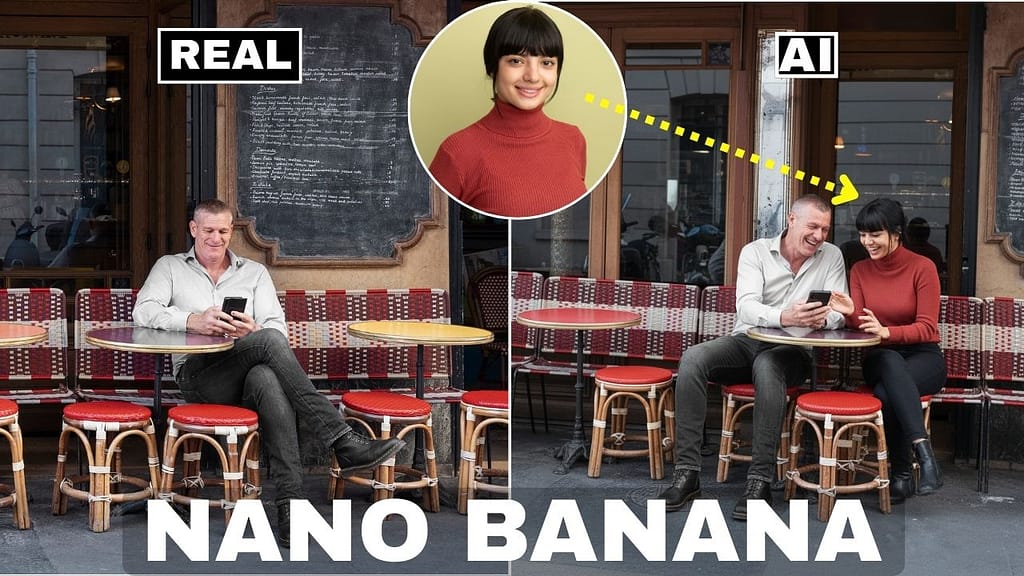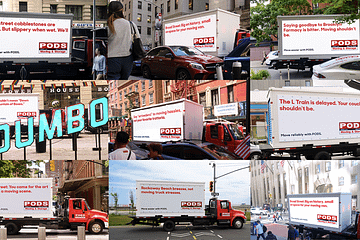You know how every piece of marketing collateral, every ad, every social media post feels like an act of Herculean effort? You have a brief, and then a design team gets to work, and it would take days, maybe even a week, to get a single, solitary ad image back. Or if you’re like me, that’s all on your own plate, and gets done only when the urgent stuff is off your desk, which isn’t sufficient. And what if you want to test a dozen variants? Don’t even get me started on the logistical nightmare. The entire process can be so ponderous and fraught with bottlenecks it’s a wonder anything ever got done at all.
But something is shifting, and it’s happening so fast it’s a little disorienting. You’ve heard all about the generative AI models that can conjure entire worlds from a handful of words. Now, Google has a new entry, code-named Nano Banana, and it’s poised to fundamentally alter the very fabric of how marketing teams create and deploy visual content. Forget a banana a day keeping the doctor away; this one might just keep your marketing budget from hemorrhaging. It’s not just a new tool; it’s a new paradigm.
So, what exactly is this Nano Banana?
At its core, Nano Banana is a generative AI model designed for speed and precision. Its entire purpose, its raison d’être, is to spit out marketing visuals faster than you can say “campaign optimization.” It’s a tool built for the modern marketer who needs to move at the speed of thought, not at the pace of a design review cycle. What’s truly remarkable is its ability to take a simple text prompt or a template and generate highly customized, on-brand assets in moments. We’re talking dozens of ad images, banners, and campaign visuals in minutes, not days. This isn’t just an incremental improvement; it’s a quantum leap forward.
The Creative Catalyst
Think about the sheer volume of creative work that goes into a single campaign. You need a header for your website, a half-dozen social media posts, a few different ad formats for A/B testing, maybe a banner for an upcoming webinar. The traditional workflow would see your designers buried under a mountain of requests, juggling priorities and trying to maintain brand consistency across a dizzying array of formats. Nano Banana changes that entirely. By using prompt templates, you can enforce color palettes, typography, framing, and even compliance requirements. Every single asset, from a Facebook ad to a trade show banner, will look like it came from the same creative family. This ensures a unified visual identity across every touchpoint, which is crucial for building a cohesive and recognizable brand.
And what about the age-old challenge of localization? You’ve got a fantastic campaign image, but it needs to be adapted for different markets. Maybe you need a different cultural context, a change in scenery, or a different style of clothing. Historically, that meant expensive reshoots or tedious, manual photo editing. With Nano Banana, you can adapt a master image to fit various local and cultural contexts with a few simple instructions, all while maintaining the core branding. This isn’t just about making things easier; it’s about making your content resonate with diverse audiences on a deeper, more meaningful level.

Thanks to Creative Pad Media for the great image!
Product Placement Perfection
One of the more mundane, yet essential, tasks in marketing is creating compelling product images. You’ve got a product, and you need to show it in a variety of settings. Lifestyle shots, mockups, different backgrounds—each one requires time and effort. Nano Banana lets you generate these images instantly. You can show a winter coat in a snowy landscape without ever leaving your office, or place a new coffee machine in a bustling café scene. You can even generate user-generated-content-style imagery, giving your campaigns an organic feel without the legal or logistical headaches that come with real-world UGC.
And the editing capabilities are just as impressive. With a few lines of natural language, you can remove unwanted objects, add a coffee cup to a scene, change backgrounds, and even tweak lighting or material textures. It’s like having a team of expert photo retouchers on call, 24/7.

Thanks to Shanee Moret, Founder at GrowthAcademy.Global, for this great picture showcasing what nanobanana can do.
Compliance Baked In
Let’s not forget about the drudgery of compliance. Regulatory disclosures, legal notations, and disclaimers are a necessary evil in many industries. Nano Banana’s ability to embed these directly into the image generation process is a game-changer. You can bake in required text, like “simulated image” or “offer ends soon,” as a systematic and auditable step. This not only saves a huge amount of time but also significantly reduces the risk of human error, which is a big deal when you’re dealing with legal and brand safety.
So, what does all of this mean? It means a 50 to 70 percent reduction in asset production time. It means you can A/B test a wider array of creative options, leading to better click-through and conversion rates. It means marketers can shift their focus from the slow, manual process of asset creation to the strategic, data-driven work of optimization and personalization.
Nano Banana isn’t just a new feature; it’s the future of creative production. It promises to turn your marketing department into an agile, highly personalized creative engine. And if you’re one of the early adopters, you’re poised to gain a measurable advantage in both speed and effectiveness.

Thanks to Marketing4eCommerce for the image!
Why a Nanobanana is Anything but Slippery
The marketing world has been awash in a deluge of new AI tools, each one promising to be the next big thing. It’s enough to make a seasoned pro feel a bit cynical. You’ve seen the demos, you’ve read the articles, and you’ve likely found that while these tools are quick, they often lack the precision, control, and sheer creative authority you need for professional work. The results are frequently unreliable, the edits are poor, and maintaining subject consistency is a Sisyphean task.
This frustration is precisely where Google’s internal R&D found themselves. They had the Gemini 2.0 Flash model, which was fast, but they heard from users that it wasn’t quite good enough. They wanted higher image quality, they craved creative control. So, in their quest to fill that chasm, they built something different, something better. And they gave it a very odd, very sticky, codename: Nano Banana.
The Viral Life of a Fruit
A Google exec tweets a banana emoji, and suddenly, the internet goes nuts. That’s exactly what happened here. Makers at Google started using the codename for the upgraded Gemini 2.5 Flash Image model, and it took on a life of its own. It started with subtle nods—banana emojis in tweets, a banana theme in early test outputs, and an odd kind of fanfic that began to spread across forums.
This little bit of viral marketing, entirely unintentional at first, was a rare and wonderful thing for a company like Google. They’re usually a bit too buttoned-down and controlled with their launches. But the nickname stuck, spreading through creator communities like wildfire. This allowed the product’s reputation to build on its own merit, fueled by a community of early access users who were genuinely impressed with the results. It was a grassroots movement, and by the time Google formally confirmed that Nano Banana was the upgraded Gemini 2.5 Flash Image model, the internet had already done a significant chunk of their work for them.
Engineered for the Pragmatist
This model wasn’t developed for the whimsy of viral memes, however. It was built to solve specific, tangible problems. Traditional image models often fail at the fundamentals. Want to change the background? You’ll likely end up with an awkward halo effect. Need to maintain the likeness of a model across a dozen different shots? Good luck.
Nano Banana leverages the core of Gemini’s foundation in language and world knowledge to fix these issues. This means you can use simple, natural language prompts like “swap the background,” “change the clothing style,” or “insert product X.” The model understands these complex instructions in a single step and delivers a lifelike, consistent result. This is about real-world use, not just creative experimentation.
And because it’s a Google product, there’s an immediate emphasis on responsible AI. All images created or edited by this model are invisibly marked with SynthID watermarking. This allows for provenance tracing, so you can always tell if an image has been manipulated by AI. It’s a necessary step in an era where deepfakes are a real concern, and it shows a thoughtful approach to a powerful technology.
The Impact on the Market
Since its launch in August 2025, Nano Banana has quickly climbed the ranks, gaining a lot of traction among marketers and creators. Its combination of speed, efficiency, and real-time editing has made it a genuine alternative to legacy software like Photoshop for many tasks. It’s not about replacing traditional tools entirely, but rather about creating a new standard for a vast majority of the work that needs to be done.
Nano Banana’s journey, from a quirky codename to a state-of-the-art tool, reveals a crucial lesson. The most impactful technologies often emerge not from a grand, over-publicized launch but from a methodical, user-centric process aimed at solving fundamental problems. It just so happened that this time, it came wrapped in a banana peel.
So, have you tried it yet? Made any images? Is the hype overblown, or is this a real shift?



0 Comments